Engage
Thank you for completing the Weaver Park Redesign online survey or attending the in-person open house.
Feedback received will help inform Administration's final design and can be reviewed in the Engagement Summary.
Thank you for completing the Weaver Park Redesign online survey or attending the in-person open house.
Feedback received will help inform Administration's final design and can be reviewed in the Engagement Summary.
For more information on the Weaver Park Dry Pond Project, including a description of the draft concept design, please watch this recorded presentation.
The proposed dry pond in Weaver Park will reduce flood risk in an area with a history of significant flooding and expected future flooding with climate change.
One recent example of extreme rainfall occurred on June 20, 2022. Below are images captured at two intersections near Weaver Park on that day.

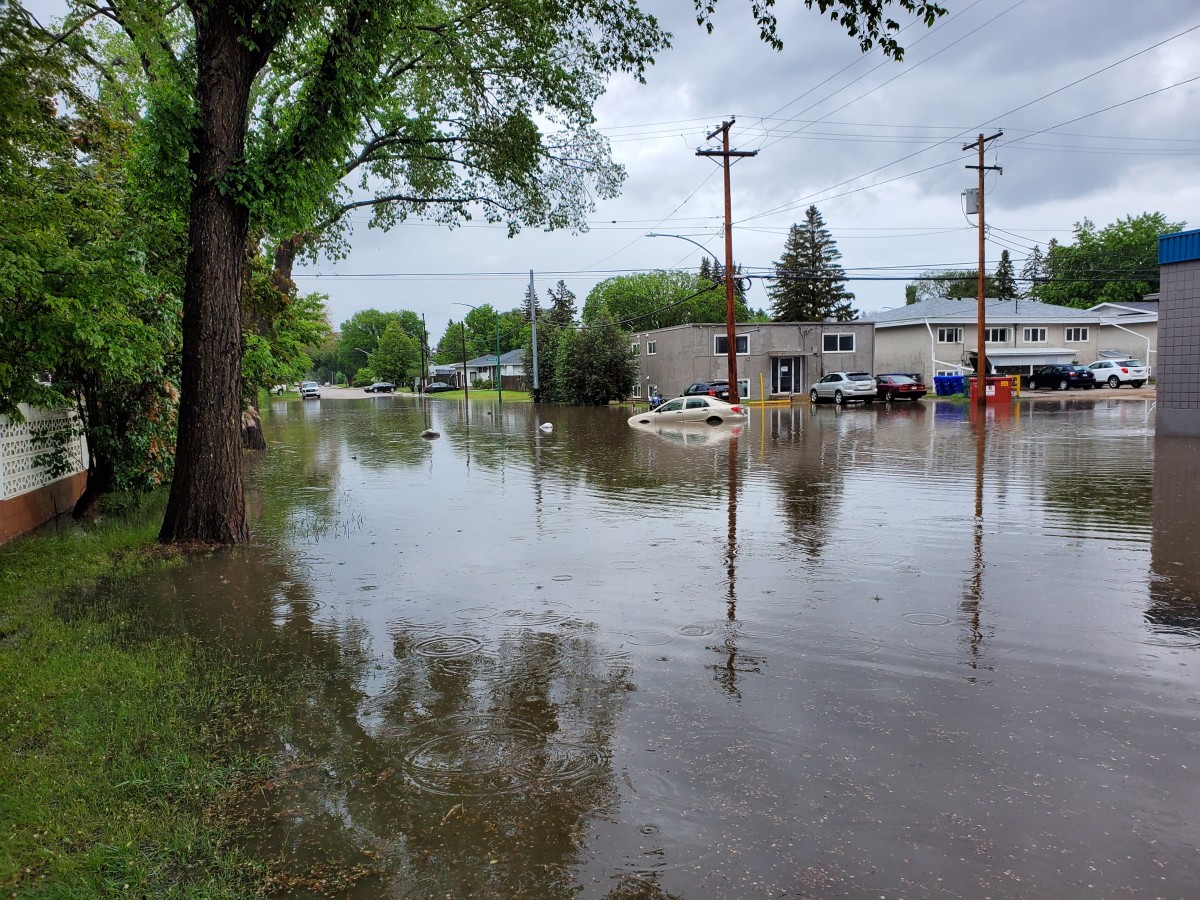
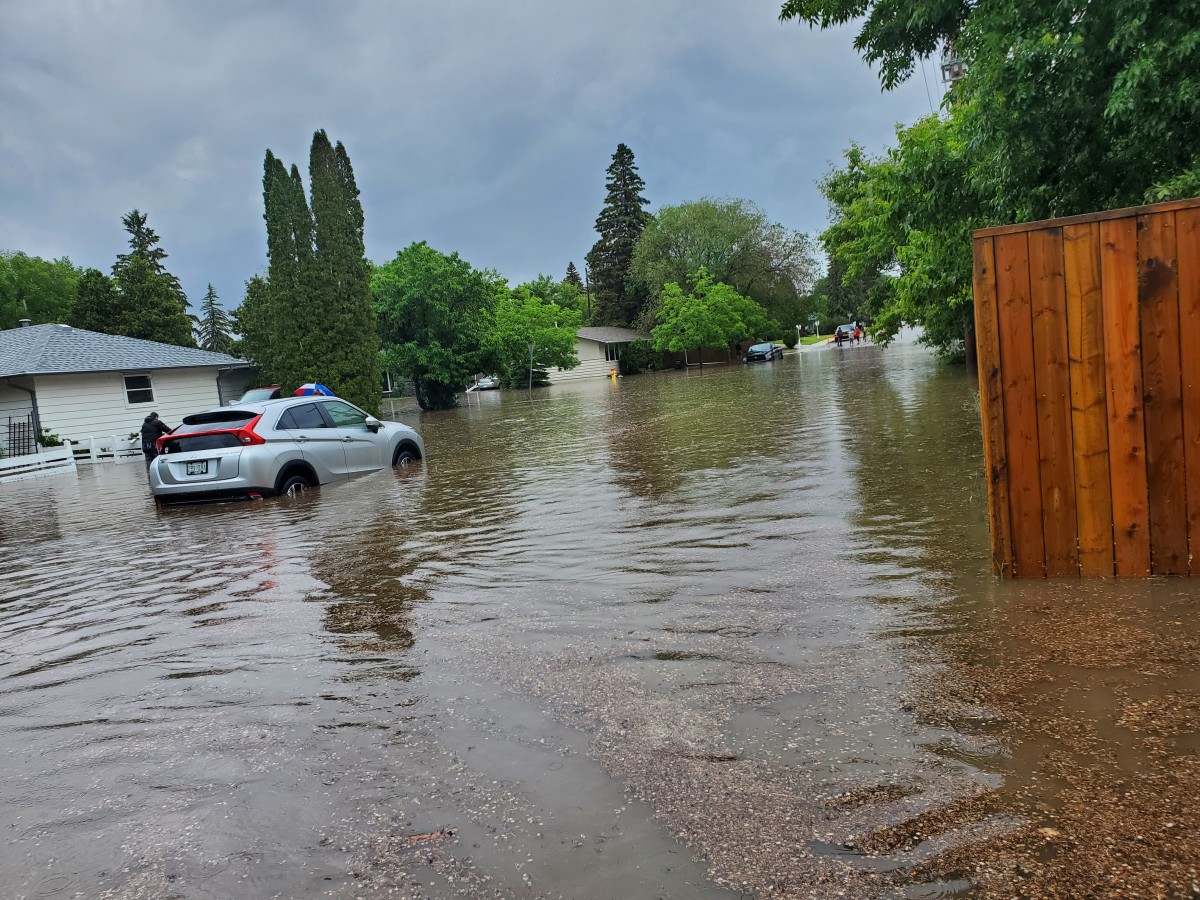
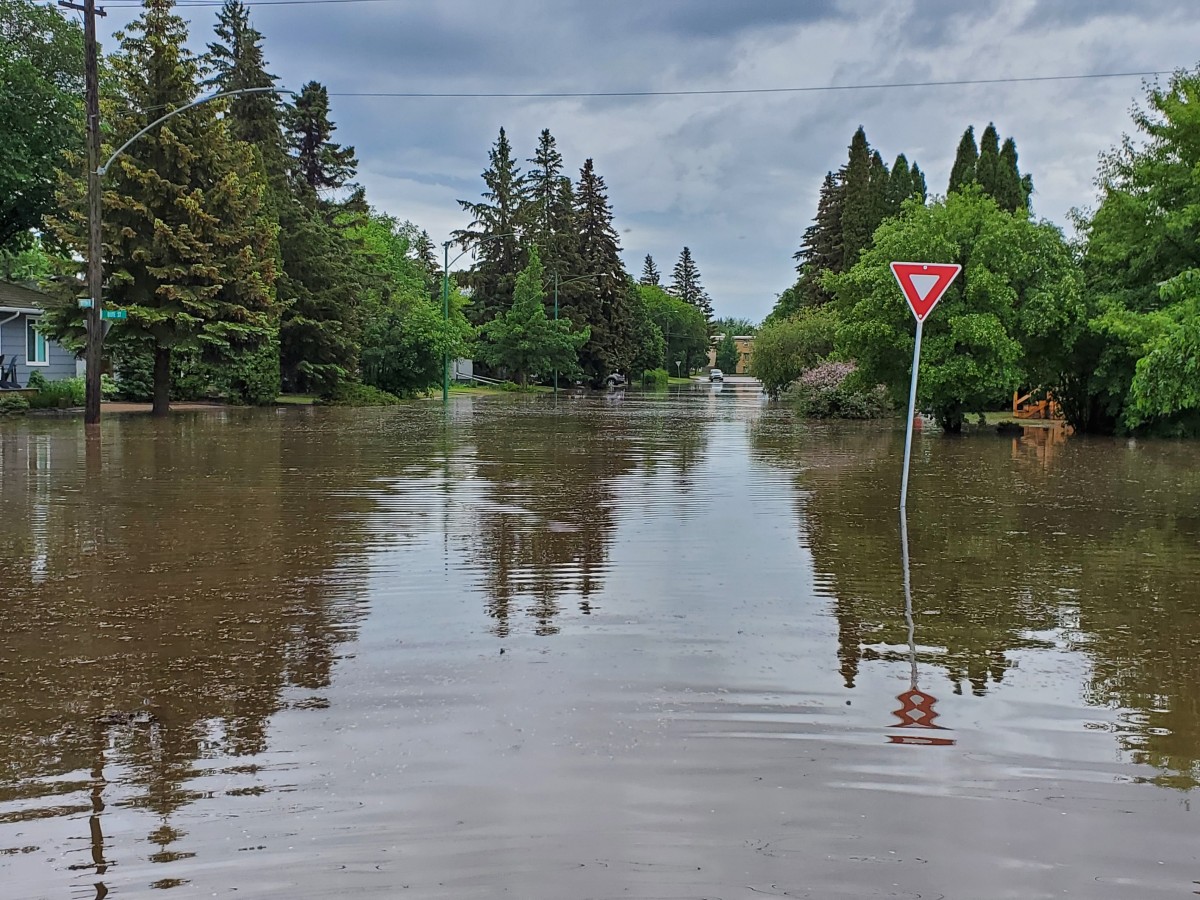
Flooding only occurs during significant rain events. Neighbourhoods developed prior to 1989 were not constructed to the same standards and storage we install today. Significant rain events are now managed through wet and dry ponds, and have the ability to collect high volumes of storm water.
A dry storm water pond, or dry pond, is a storage area that temporarily holds rain water during intense rain events. The water is stored in the pond temporarily before it drains back into the underground pipe system. It is different from a wet pond in that most of the time the dry pond will not hold any water and can be used as park space.
Modeling results indicate that a 1-in-10 year rainstorm would cause flooding in approximately 26 buildings near these intersections:
The dry pond and storm water sewer infrastructure upgrades will significantly reduce the risk of flooding in these areas in a 1-in-10 year rainstorm as demonstrated in the images below.
The quality recreation and green infrastructure currently offered in Weaver Park is of high community value to local residents and park users. The dry pond scheduled for construction will be located in the north part of Weaver Park to avoid impacting the existing full size multi-purpose field in the south half of the park.
The small multi-purpose field that is currently located in the north part of Weaver Park will be impacted. A 65 metre by 25 metre recreation field aligned east-west is part of the concept design and would be placed between the playground area and dry pond. The dry pond will not have a formal recreational field installed on the pond floor, but will be used as an informal recreation and green space.
Construction of the dry pond and upgraded storm water and sewer infrastructure is expected to occur from February to October 2023. Landscape maintenance is then expected to occur between October 2023 and October 2024. The dry pond construction area will remain closed during this time period.
Below is a map displaying the construction areas for dry pond construction and the associated storm sewer infrastructure upgrades.
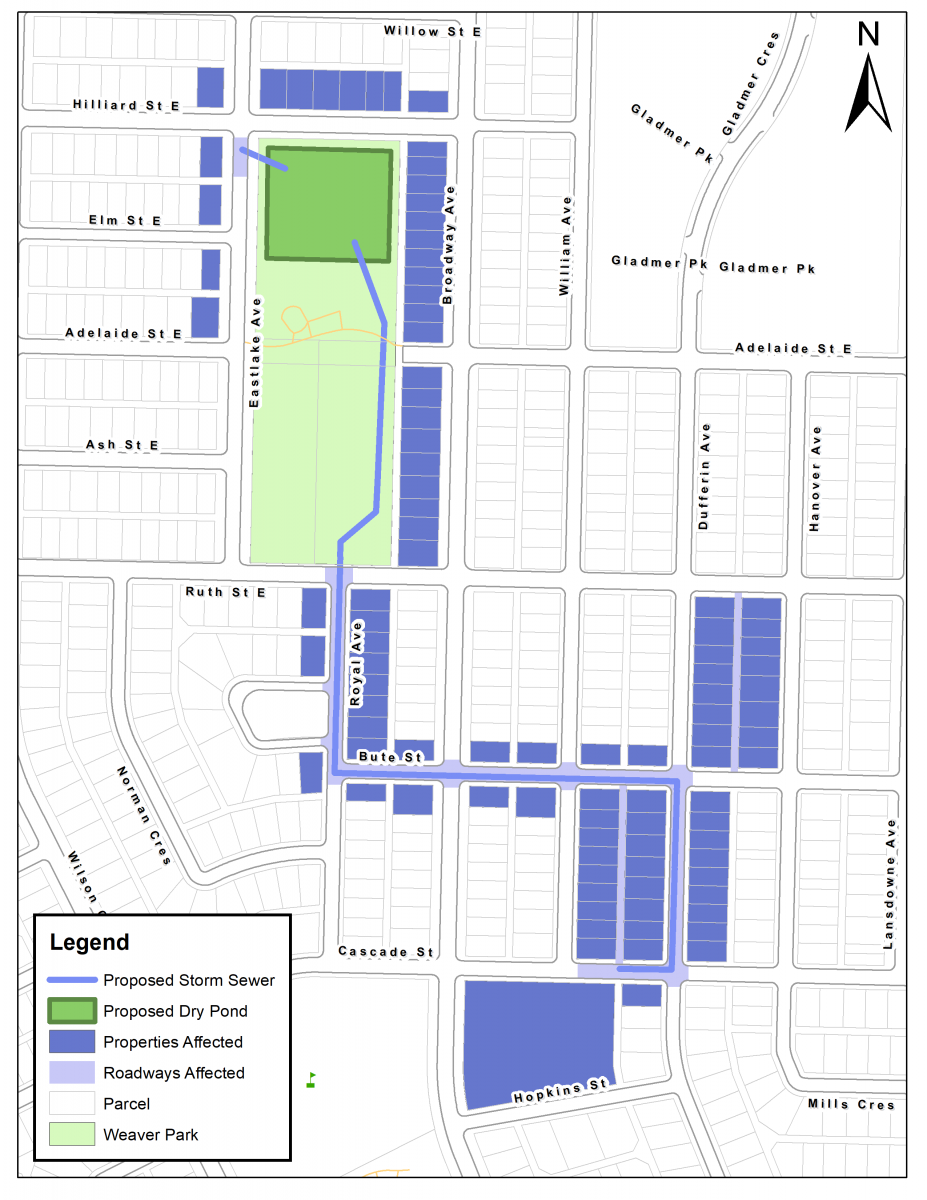
The north part of the park where the dry pond is being installed will not be available for use during construction. Public use of the north part of the park is not anticipated to be available until late 2024 so the new sod can establish. Fencing and signage will be in place during this time.
The construction team will attempt to keep the playground area open during construction. If this plan changes, the neighbourhood will be notified.
The City will attempt to minimize the construction footprint to the extent possible for the storm sewer pipe installation planned along the east boundary of the south part of Weaver Park to allow recreation to continue through construction.
The City will not be installing additional fencing in order to keep the park inviting for use the majority of the time when the dry pond bottom is not holding water. While there will be a safety risk from the water during and immediately following intense rain events, a fence also creates safety risks of falls and entrapment. Fences also detract from aesthetics, can catch debris, and require frequent maintenance. Fences should only be used when their risk reduction and advantages outweigh the additional risks and disadvantages.
Signage will be posted around the dry pond to alert park visitors of the potential safety risks when the dry pond is flooded.
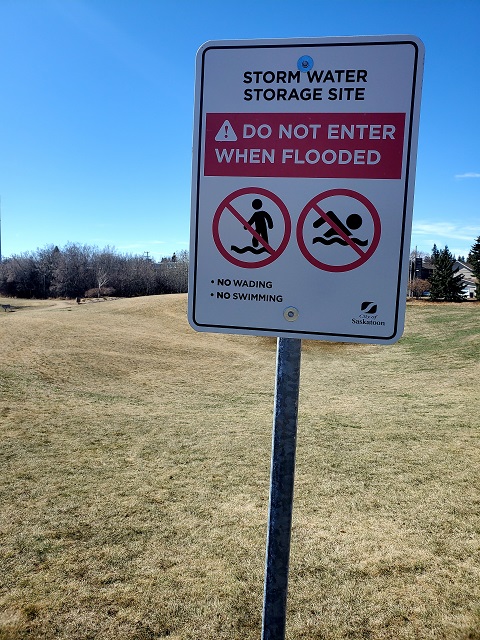
The dry pond will be designed to maximize the protection of trees in the park, but some will need to be removed to accommodate the dry pond, storm sewer infrastructure, and maintain recreation service levels. Approximately 26 trees may be removed during construction of this project.
New trees will be planted as part of the project. The locations of the plantings in the landscape design will be finalized following public engagement to consider your feedback.
The dry pond will be designed to hold the water that would otherwise be flooding streets and nearby properties during intense rain events. This will be confirmed in the detailed design, however water in the pond can likely be expected once or twice a year on average. Water will drain out of the pond within twenty-four hours after a storm, depending on the storm intensity. A layer of sub-drainage will be further evaluated as an additional measure to ensure that drainage meets standards while also considering geotechnical conditions and irrigation benefits.
If you've ever experienced flood damage, you know how devastating it can be. Though parts of Saskatoon have always been susceptible to flooding, and flood protection measures to date have helped, climate change is expected to bring more frequent and intense storms.
In December 2018, City Council approved implementation of the nine-year $54 million Flood Control Strategy to mitigate flooding in ten areas that experience frequent flooding. The W.W. Ashley Park dry pond was the first project undertaken through this strategy and the Churchill Park dry pond, when completed, will be the second.
Visit the Flood Control Strategy page for more information.
In 2019, the Government of Canada (Government) approved 40% cost sharing of the Flood Control Strategy's total estimated eligible expenses of $54.1 million, up to a maximum of $21.6 million through the Disaster Mitigation and Adaptation Fund. The City approved Storm Water Utility funding of $32.4 million through previously approved increases to the Storm Water Management Charge to cover the other 60% of the expenses.
Based on a recent technical evaluation and concept design for a Weaver Park dry pond, the adjusted estimate for eligible construction expenses for Government funding on this specific project is approximately $8.7 million. The Government would therefore be covering about $3.5 million of the Weaver Park dry pond construction expenses.
This image displays the existing conditions of Weaver Park. Please note these rendering are aligned so that the north side of the park is pointed left.
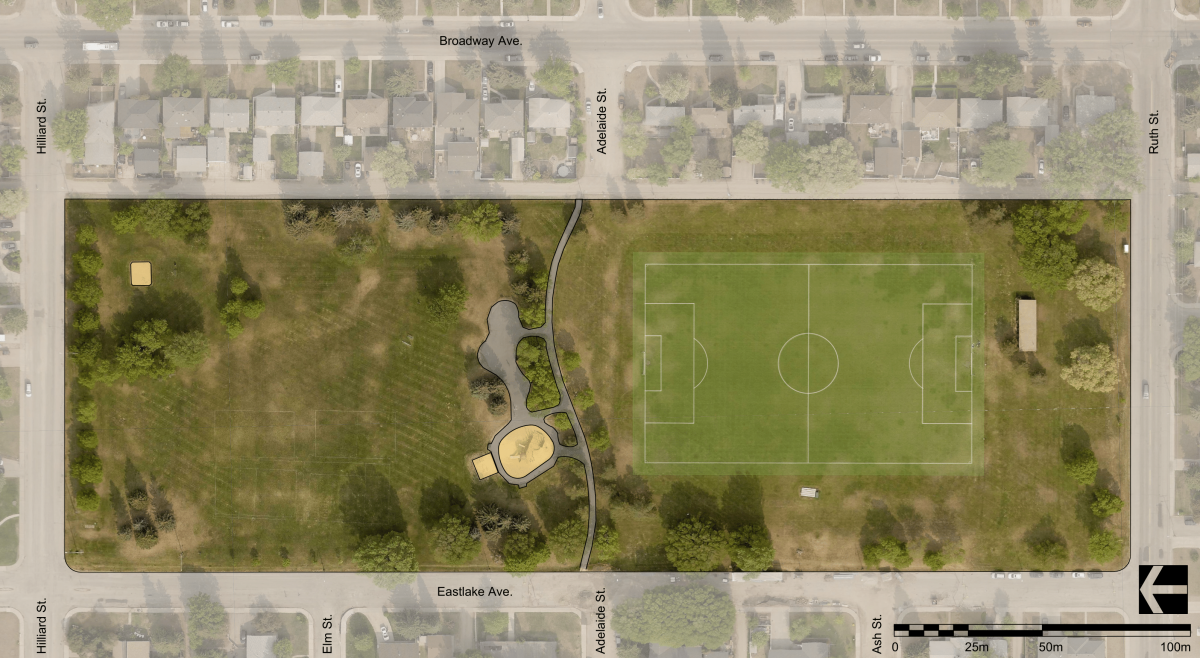
In the following image, you can see the design for the new dry pond in the north side of Weaver Park. The neon green lines indicate the new storm water infrastructure that will be constructed. The red circles indicate where existing trees will be removed.
Some other notable details about the design include:

Most of the time, the dry pond will be free of water.
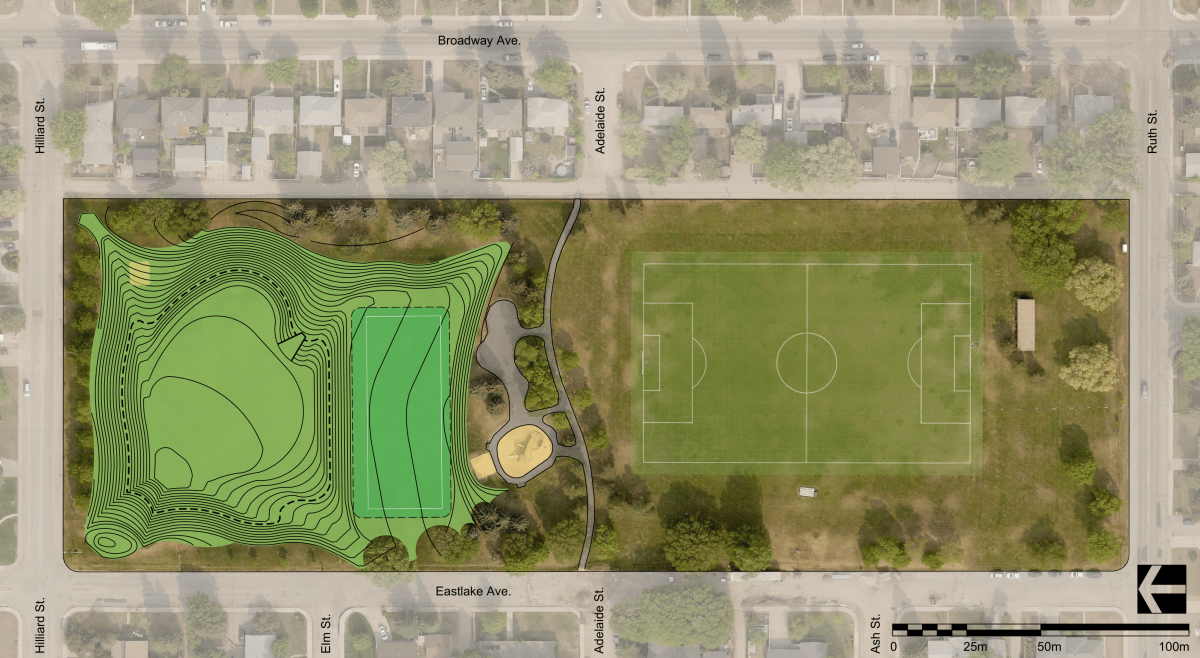
As shown below, the smaller multi-purpose field that will be added as part of the Weaver Park redesign is not designed to be submerged in water following a rain event.
The dry pond is intended to contain storm water during and following a rain event to allow the water to more gradually drain into the storm water sewer system in order to mitigate the risk of flooding in the area.
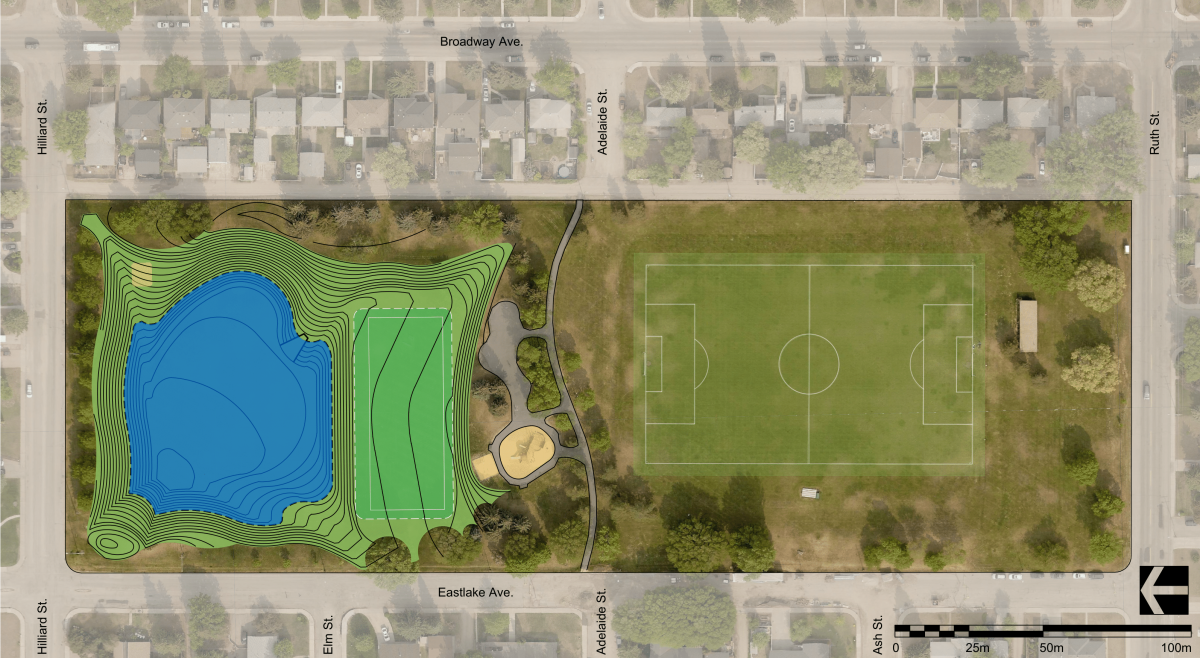
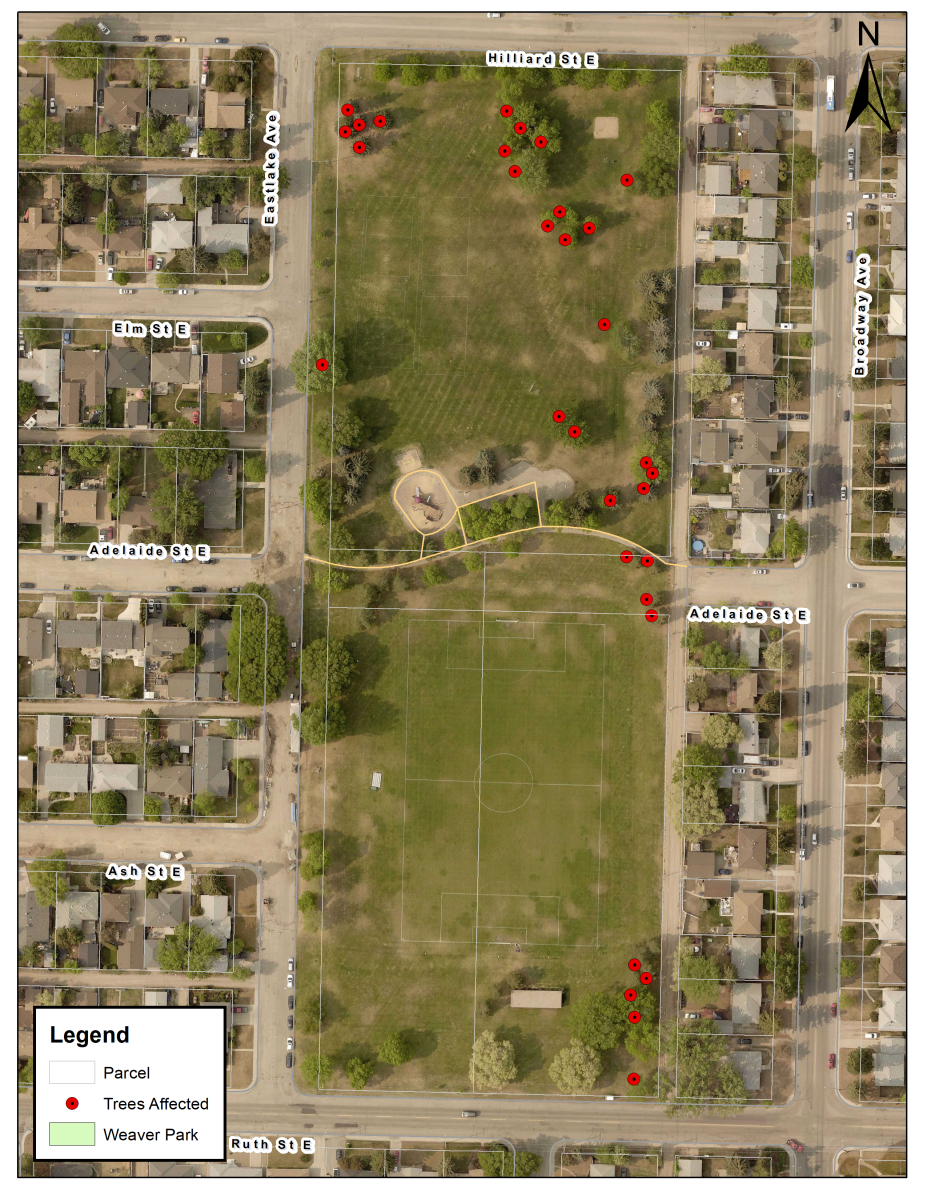
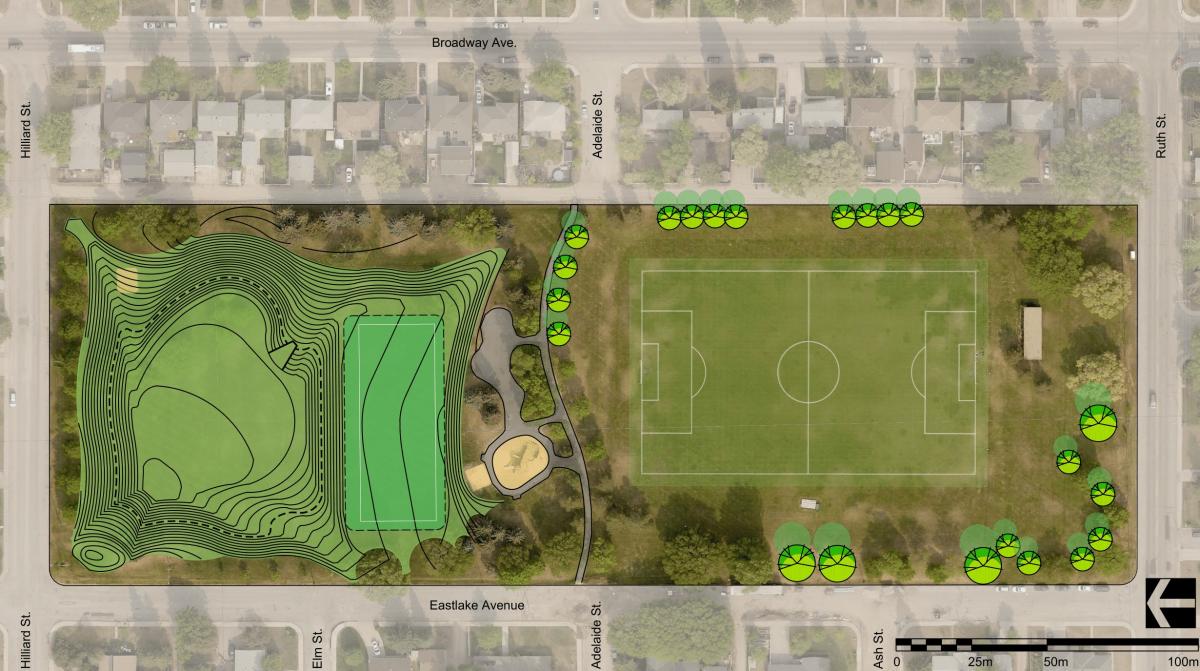
Construction of the dry storm pond at Weaver Park will take place in 2023.
Learn more about the City's storm water system, flood control strategy and home flood protection actions.